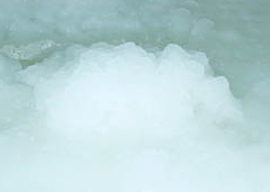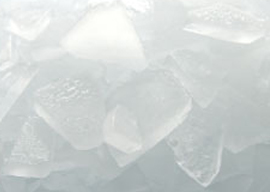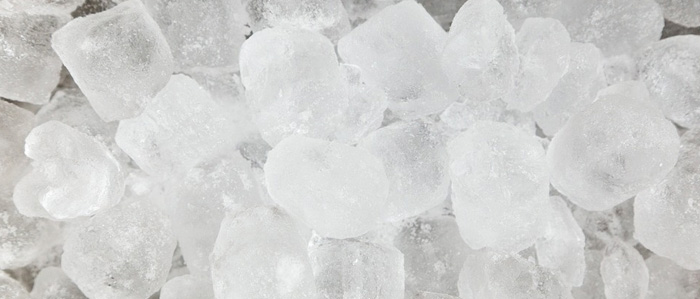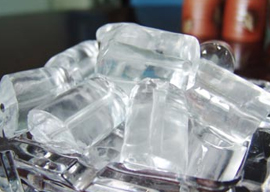Ice Practical Uses
Who’d have believed the ice could play with such various uses beyond keeping us cool?
An American physician by the name of John Gorrie constructed an air cooling system to help treat his yellow fever patients — but his eureka time did not cease there. Historians credit Gorrie, who went to become “the daddy of refrigeration,” with the creation of the first ice cube tray.
 Below are a few methods to place your ice to great use:
Below are a few methods to place your ice to great use:
1. Houseplants that are quench
Houseplants help clean the atmosphere, so having lots of them about is a great thing. For difficult-to-reach plants or for those pots prone to overflowing, it is possible to put ice cubes and allow them to melt into the ground for slow absorption.
2. Get medication down the hatch
The manufacturers of kids’ medication attempt to disguise the flavor, it tastes different, particularly to young taste buds, which are sensitive to bitterness. Giving a child an ice cube to suck on first can help hide the flavor. (Placing a spoonful of sugar in the water when making the ice will almost ensure success.)
3. Relieve splinter fear
There’s nothing like the horror in the eyes of a kid who sees the needle and tweezers approaching a splinter spot. If the place is iced before, kid will not feel it. Following removals should be harrowing while this may not facilitate the first panic.
4. Soothe the eyes
A lot of people understand about using chopped cucumbers on eyes that are achey, but if there is none on hand, ice on worn-out or bouffant peepers will help soothe and reduce swelling. Put ice cubes in a soft cloth and apply to eyes off and on for a quarter hour.
5. Fall bruising
When capillaries near the surface of your skin break, letting a touch of blood leak into the tissues under your skin bruises types. If you apply ice to the body part that is hammered quickly, the chill will assist you to constrict blood vessels and will reduce the severity of a bruise and swelling. It’s finest to get the ice while it’s reddish and fresh before discoloration starts. Don’t apply ice directly to the skin (wrap it in a cloth) and apply for up to 15 minutes or an hour.
6. Cool the dog or the cat, hamster
Ice may also be many a dog’s favorite chew toy, which could play with double responsibility for cooling help at the same time.
7. Simplify caulking
Tacky caulk is a creation. Specialized tools help, but an ice cube is a little wonder in regards to the final smoothing of a bead that is gunky. Run the ice along the seam; the caulk will not stick, although it will make a fine edge, smooth and tough.
8. Spiff up the garbage disposal
The garbage disposer is assumed to have garbage and its olfactory properties, but occasionally in the procedure, it ends up creating more than it removes scents. Try ice before reaching for commercial disposer cleansing agents which might include bleach and other compounds. Give a whir with ice cubes and lemon rinds to the disposal to break down grease that can undermine the device’s functionality and add a fresh scent that is vibrant.
9. Give sparkle to coffee pots, bottles or vases
Use ice if you’ve got a glass container with a little neck that’s difficult to clean. Add lemon, course salt, and ice cubes and swish and milkshake for a short while. The salt works the lemon cuts grease, as a light abrasive, and the ice is the vehicle that gives the impetus that is scrubbing.
 10. Thicken dressings
10. Thicken dressings
When combining an olive oil and vinegar dressing in a jar, it can not be easy to get a fine, heavy emulsion. If you shake vigorously and add an ice cube, it thicken and will cool the oil making for a much more creamy dressing. Remove and serve quickly.
11. Fix broken sauces
Ice to fix curdled sauces. But if the eggs in the sauce are cooked, there’s not much ice can perform to uncook them. Having said that, if you catch an emulsion that’s just beginning to break — when a rim of butter lines the border or little pools are forming on top which you are able to see — an ice cube can help. Remove the heat and whisk in the ice cube.
12. Skim the fat
You do not want a committed fat separator to remove extra fat from soups, gravies, and stews, you can only fill stainless steel container or a ladle with ice and skim across the top of the soup. The fat will harden on contact with the metal that is cold and will stick to it.
13. Remove Chewing Gum
Rub an ice cube on chewing gum stuck to clothes, and scrape off the wreck with the border of a spoon.
Check out Snowkey’s ice machines, easy way to make a tube ice, flake ice, slurry ice, block ice and plate ice. Visit Snowkey Australia website at http://snowkey.com.au.



Comments are closed.